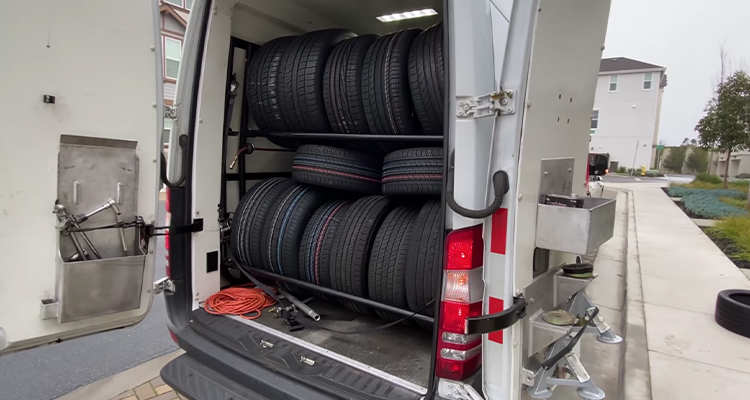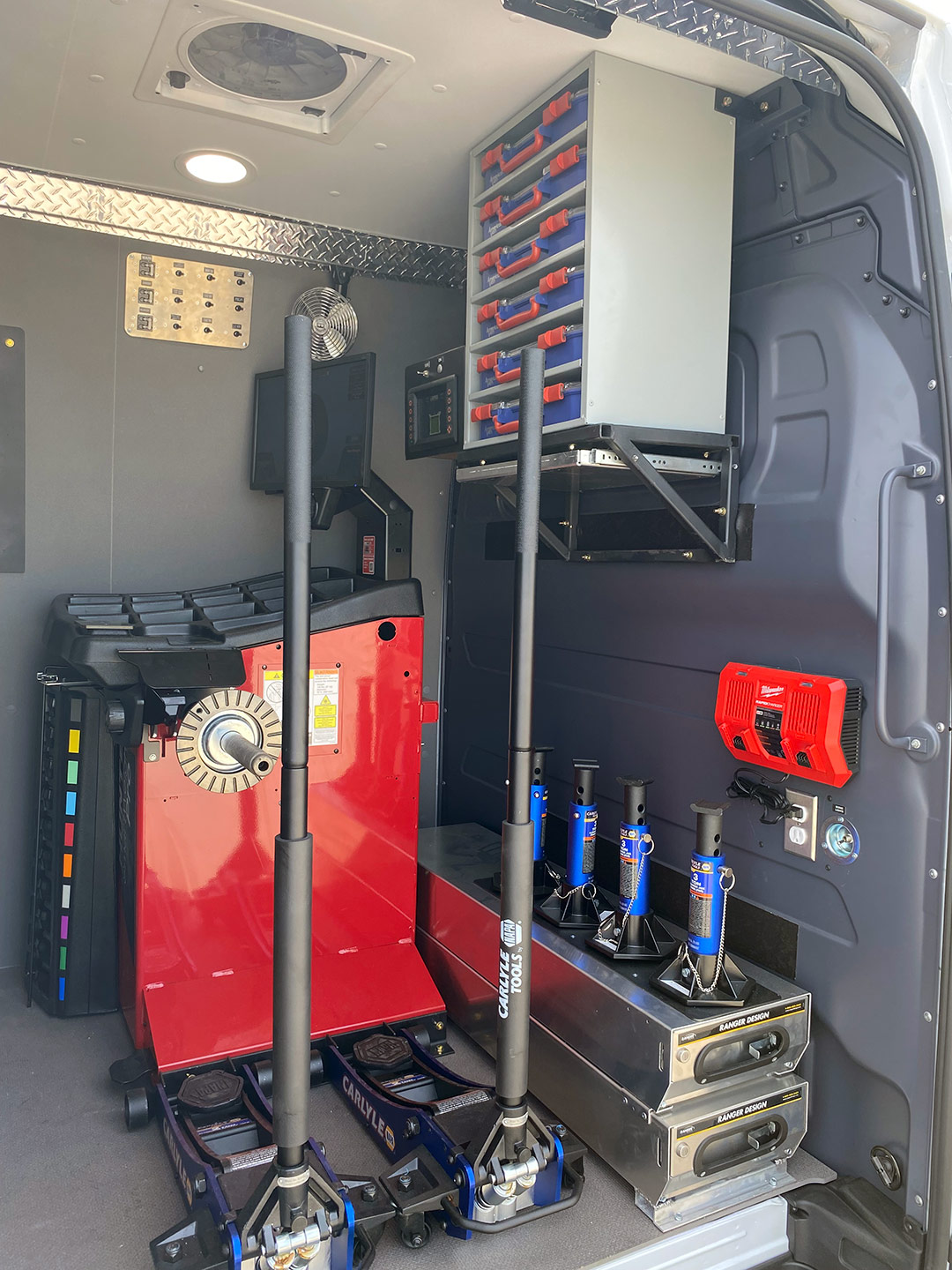Convenient Mobile Tire Service in Las Vegas at Your Front door
Convenient Mobile Tire Service in Las Vegas at Your Front door
Blog Article
Tire Service: Proven Methods for Optimum Tire Upkeep and Care
Keeping optimum tire condition is critical for both safety and performance of any type of vehicle. From ensuring appropriate tire pressure to normal rotation and alignment, there are tried and tested techniques that can substantially prolong the life expectancy of your tires and boost overall driving experience. As we explore the details of tire treatment and maintenance, we will certainly reveal essential standards that every automobile owner ought to stick to for the finest possible results. Allow's dig into the globe of tire service and find the tricks to keeping your tires in superior form for the long run.
Importance of Tire Pressure
Proper tire stress is an essential consider making sure optimal car efficiency and safety and security when traveling. Maintaining the suggested tire stress levels supplied by the manufacturer provides countless benefits. Sufficient tire pressure advertises far better fuel effectiveness, as under-inflated tires can lead to enhanced rolling resistance, creating the engine to work more challenging and take in more gas. Second of all, proper tire pressure guarantees also step wear, improving tire longevity and conserving cash in the future by delaying the need for premature replacements. In addition, correctly blew up tires add to improved handling and braking capacities, critical for safe driving in different road conditions. Over-inflated tires, on the various other hand, can lead to reduced grip and a harsher ride. Conversely, under-inflated tires are vulnerable to getting too hot, which can bring about crashes and blowouts. Consistently changing and inspecting tire pressure, especially soon journeys, is a basic yet efficient way to boost vehicle performance, prolong tire life expectancy, and focus on safety when driving.
Tire Rotation Standards
When considering tire turning standards, it is crucial to understand the importance of this upkeep task in taking full advantage of tire life expectancy and maintaining optimal automobile performance. Tire turning involves altering the position of each tire on an automobile to make sure also step wear. Front tires often tend to use a lot more quickly than back tires due to steering forces, making normal turning vital for well balanced wear patterns. The recommended turning pattern differs depending on whether a lorry is front-wheel, rear-wheel, all-wheel, or four-wheel drive. Normally, tires should be rotated every 5,000 to 7,500 miles, or as recommended in the lorry handbook. Overlooking tire turning can cause uneven wear, affecting handling, grip, and possibly compromising vehicle safety. By adhering to proper rotation guidelines, chauffeurs can prolong the life of their tires, boost gas performance, and enhance total driving experience. Normal rotation is a straightforward yet effective upkeep technique that adds significantly to tire longevity and lorry performance.

Advantages of Wheel Alignment
Guaranteeing correct wheel positioning after tire rotation is critical for keeping balanced wear patterns and optimizing car performance. Wheel placement refers to the modification of the angles of my blog the wheels to the manufacturer's specs. Among the essential benefits of wheel alignment is enhanced dealing with and guiding reaction. When the wheels are correctly aligned, it lowers guiding effort, making sure a smoother and more regulated driving experience. Furthermore, appropriate wheel positioning helps to extend the life expectancy of your tires. Misaligned wheels can create irregular tire wear, causing premature tire substitute and boosted upkeep prices.

Tire Tread Depth Examine
Performing a regular assessment of he said tire tread depth is essential for keeping safe driving problems and prolonging the life expectancy of your tires. The step on your tires plays a vital role in supplying traction, specifically in unsafe or wet conditions. To inspect your tire step depth, you can make use of a walk deepness gauge or the penny test. The advised tread depth is at least 2/32 of an inch. It is time to replace your tires to make certain ideal efficiency and security on the roadway if the step depth is listed below this limit. Irregular step wear can indicate concerns with tire positioning, suspension, or stress, highlighting the significance of normal walk deepness checks. Overlooking to monitor and preserve correct walk deepness can bring about decreased hold, longer stopping distances, and an increased threat of hydroplaning. By including tire walk depth explore your routine upkeep routine, you can drive with confidence recognizing that your tires remain in leading condition.
Seasonal Tire Evaluation
Seasonal tire evaluation is an essential facet of tire upkeep that makes certain tires are ready to encounter the challenges presented by different climate conditions. In preparation for winter, it is necessary to examine the tire pressure frequently as cool temperature levels can cause tire stress to go down. By performing regular see seasonal tire inspections, motorists can lengthen tire lifespan, boost fuel efficiency, and most significantly, make sure a secure driving experience in varying weather conditions.
Final Thought
In final thought, keeping appropriate tire stress, rotating tires routinely, straightening wheels correctly, keeping track of walk depth, and conducting seasonal assessments are important practices for optimum tire care. By adhering to these proven methods, drivers can guarantee their tires last longer, perform far better, and add to overall car security. It is crucial to focus on tire upkeep to stop accidents, enhance gas performance, and lengthen the lifespan of tires.
Sufficient tire pressure promotes better fuel performance, as under-inflated tires can lead to boosted rolling resistance, creating the engine to work more difficult and consume even more fuel.When taking into consideration tire turning guidelines, it is vital to understand the importance of this upkeep task in maximizing tire life expectancy and keeping optimum automobile performance. Seasonal tire inspection is a basic aspect of tire upkeep that makes certain tires are ready to face the obstacles postured by various weather problems. By performing routine seasonal tire examinations, motorists can extend tire life expectancy, improve gas efficiency, and most significantly, guarantee a secure driving experience in varying climate problems.
In verdict, maintaining correct tire stress, turning tires regularly, lining up wheels correctly, keeping track of walk depth, and carrying out seasonal inspections are necessary methods for optimum tire treatment.
Report this page